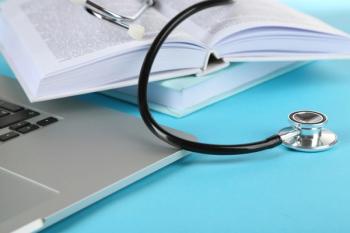
What Makes a Strong Wearable? A Conversation with Rosalind Picard, Part 2
Health-tech KOL Janae Sharp discusses how wearables and digital health apps could be improved with the inventor of affective computing.
This is the second installment of a two-part story on Rosalind Picard, Sc.D., who is the pioneer of affective computing, which began at the Massachusetts Institute of Technology (MIT) MediaLab.
Picard has two startups in the affective computing space, including Empatica, which makes a wearable to help with epilepsy management. Picard recently spoke at the Intersystems Global Summit, and I had the chance to talk with her about artificial intelligence (AI), depression and autism before her keynote.
When our discussion left off, we were discussing her work with wearables. Here’s a lightly edited version of where it picks up.
Sharp: How does your work intersect with the current hype of the fitness-tracking industry in healthcare? I tend to be unimpressed with the quality of the technology not matching the quality of the marketing power of large companies like Apple. They get a lot of coverage, but the tracking isn’t as good.
Picard: What was your experience?
Sharp: I did a bit of triathlon training with a Polar watch and TrainingPeaks, and some of my friends are professional triathletes. The information you get can predict whether you are making fitness progress. It can tell a coach what you need to do with nutrition. You can even tell from some of that data if you are coming down with a virus or overtraining. This helps prevent illness and injury.
>>
Mainly, I am struck by the different focus. Athletes are motivated to know their data, and they expect high-quality data. With fitness trackers that are getting most of the coverage, even in healthcare, the technology is lacking, and the goals aren’t aligned. Is it just an insurance discount?
Picard: Yes, the market is interesting. There’s obvious crossover with the fitness industry, as far as watches that give heart-rate data, exercise data — all types of fitness trackers.
Unfortunately, there’s been a mismatch of consumer excitement and quality of the devices on the market, because sometimes a really low-quality product can have an exciting and well-targeted marketing campaign. I still see huge potential in that industry, but I also completely recognize the way that consumers are demotivated or motivated, even in the best cases, by information of variable quality. Some of the products out there are definitely over-hyped. And there’s always people who pay a lot of money and wear something for a few weeks, only to quit using it — unless the insurance discount is there, in which case they have to find a way to keep it activated. I’ve seen people sticking it on dogs and those little robotic arms that go back and forth, and those little shaky things at the store. It’s bio-hacking at its finest.
In our lab, we’ve developed some of the first non-contact heart rate sensors (Note: which comprise just a camera that can read a patient’s heart rate and respiration). We also developed an accelerometer-based way to do it, so your smartphone can collect data while it’s in your pocket; the original Fitbits were just accelerometers. When you hold still, if you have a very sensitive accelerometer (Note: which all of the smart phones do right now, and the Empatica wristband and the Samsung wristband have these, too), we can sense your heart rate and respiration rate just from those minute movements activating the accelerometer, without having to actually have a heart rate sensor. And that measurement is accurate within a few beats, as are most wearable pulse -based heart rate sensors that are out there. So, it’s possible to do that now, while you are standing still. And it turns out that everyone has a kind of unique motion signature to their hearts and their breathing, so the wearable device can tell who is wearing it.
It’s not like we’ve tested these devices with the millions of people yet, to find out how much overlap there is in people’s heart beat signatures. Ours was a small study, but we found that while our device wasn’t a perfect sensor, it was close to it and was pretty good at distinguishing who was who by their heart beat signatures. So, it could probably do a pretty good job of sensing whether a wearer was cheating to get an insurance discount.
Sharp: So, we can’t cheat on our insurance discount anymore? I also really like what you are doing with motivation because when we understand motivation better, it will make our technology and wearables more than a shiny marketing ploy. Tell me: What are you most excited about for the future of your work?
Picard: I’m most excited about the work in mental health. Depression rates are increasing, and there is a reason. You don’t see spikes like what we are having without a reason. The data on mental health in America are staggering. Depression rates and suicide rates are up; together, they’re
I believe AI can help us do better things that matter to people. It can help us have better relationships. It can help us sleep better and help us take better care of ourselves and others. And now I hope that it can ultimately help us to not have depression and suicide be the No. 1 killer by the year 2030 — instead, to maybe prevent 80 percent of cases of depression.
That seems a little overly optimistic, like, “Sure, you're going to stop this huge tide using wearables,” but when we break it down and look at the things that we can measure with these devices, we’re already gathering a lot of really useful data in this area. For instance, one of my teams at MIT, collaborating with Mass General Hospital, showed that using only behavior from smartphones and wearable sensors and one prior data point of a depression score, we can assess a patient's changing levels of depression over eight weeks, obtaining .83 correlation with a psychiatrist's expert assessments.
>>
Some of the work we are doing can predict mood, which tells me there's stuff there that we could use to help us and our loved ones see a better tomorrow.
Sharp: So, what is the goal? Observe or predict? Are we still in the information-gathering stage with this technology or can it give suggestions?
Picard: At this point, we are already identifying information on behaviors that will be effective for treatment, but we need to deploy it the right way. A “nightmare app” tells you, “Sorry, but tomorrow night your stress has a 40 percent chance of being worse. Your health has a 20 percent chance of still being healthy. Your mood is 60 percent likely to be worse, too.” So, a consumer is just looking at it, thinking, “This app stinks. How depressing.” Such an app would not be successful.
We need to identify behaviors you can employ to improve your mood.
Sharp: Like, “Tomorrow you should go without social media so that you don’t become grouchy.”
Picard: Exactly. It's like the weather forecast in Boston: ‘Sorry. It is just bad, but maybe take an umbrella.’ Our data are really good, though, so we can start forecasting.
Of course, this isn't perfect, just like the weather forecast isn’t perfect. If you know in advance, you can convert your behaviors to adapt to the situation: Maybe one of your afternoon meetings becomes a walking meeting if the weather’s going to get nice again, so you can get out in the sunshine. Or, in a non-weather example, the app might suggest: ‘You haven't called any of your good friends in a while — and usually, you feel a little cheerier after talking to them. And you know what? You're running a two-hour sleep deficit. If you could go to bed an hour and a half earlier, we forecast that your stress would actually drop by tomorrow, and your mood would actually improve.’ Ideally, it would give you that information early enough in a day that you could change your plans.
Sharp: So, it’s precision medicine for your mood.
Picard: Yes, based on your data. Suggestions for your age, your stress and hopefully your physical health. We've been measuring physical health, too, because of how it impacts your mood and your stress. We don’t have as much data on people getting sick yet, but it’s looking like we can forecast a bit of that, too, since it’s so associated with sleep and stress. So that's the dream.
Interviewer’s Note: When I spoke with Picard, she didn’t know that I was a suicide loss survivor, and I didn’t know she was working with depression. I am really happy about her focus on creating tools that help. We need more scientists who are actively looking for solutions, not just selling hardware.
To read the first part of this story,
Get the best insights in healthcare analytics
Related







































